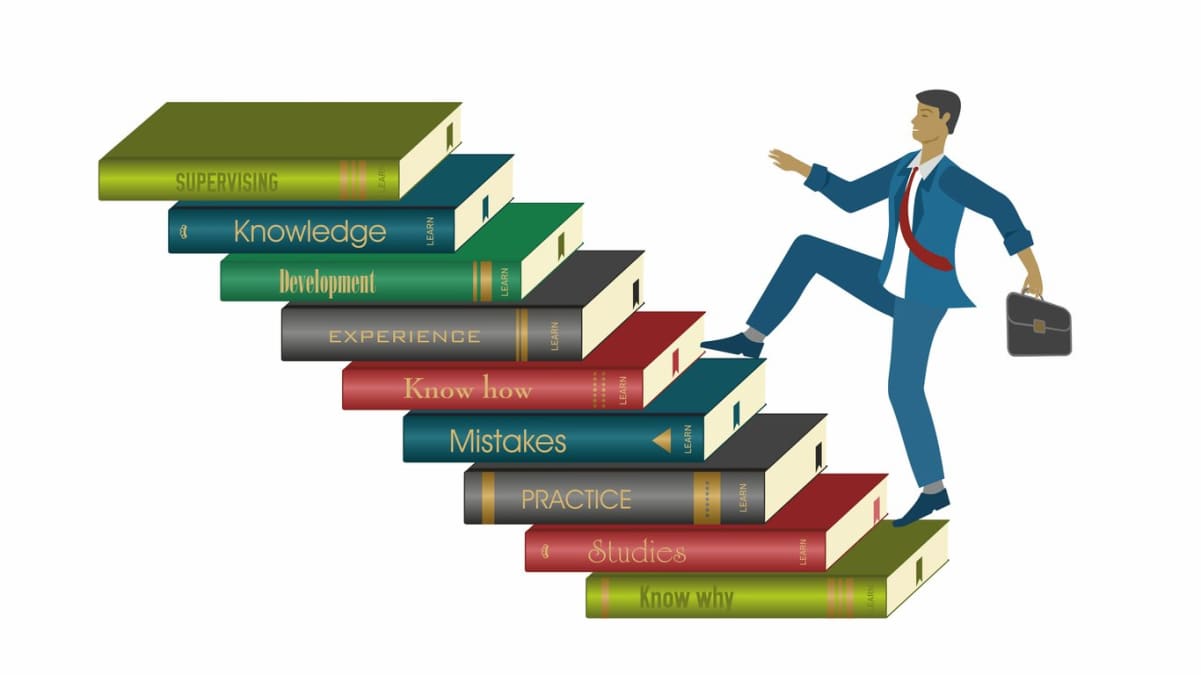Healthy conflict in the workplace isn’t an oxymoron—it’s a goal. It differentiates a thriving team from a stagnant one. This article will delve into the art of conflict-nurturing, a skill that transforms disagreements into opportunities for team building and innovation while preventing the pitfalls associated with destructive conflicts.
Key takeaways
- Healthy conflict, when managed properly, can disrupt groupthink, foster creativity, and lead to better problem-solving in teams.
- There’s a clear distinction between constructive conflict, which focuses on mutual understanding and solutions, and destructive conflict, characterized by personal attacks and a focus on winning.
Effective conflict resolution strategies involve building trust, promoting open communication, valuing diverse perspectives, and developing win-win outcomes for all parties involved.
The importance of healthy conflict

Indeed, not all conflict is detrimental. When managed strategically, conflict can become a powerful tool for improved team performance. By embracing conflict instead of avoiding it, we can:
- Disrupt groupthink, leading to more balanced and informed decision-making
- Foster compromise and creativity
- Encourage creative idea generation and productive conversation
Conflict, particularly constructive conflict, is essential for fostering a positive and productive team environment, especially in sports teams; however, it’s important to avoid conflict that is destructive or unproductive.
Consider this: a team where everyone always agrees and there’s never a hint of discord. Might sound like a dream, but in reality, it’s a breeding ground for stagnation. Healthy conflict, in contrast, sparks innovative thinking, igniting a clash of ideas from diverse perspectives. These colliding viewpoints are a valuable asset to problem-solving, encouraging us to see problems from different angles and come up with unique solutions. And when resolution comes, it fosters mutual understanding—a catalyst for innovation within relationships.
Identifying constructive vs. destructive conflict

Understanding the nature of conflict is essential. Not all conflicts are created equal. There are two main types: constructive and destructive conflict.
Constructive conflict aims at building understanding, while destructive conflict is centered on winning, often leading to frustration and unmet demands.
Constructive conflict
Constructive conflict is characterized by:
- Open and honest communication
- Resolving disagreements beneficially for all parties
- Focusing on finding solutions rather than dwelling on the problem
- Objective identification of issues, focusing on the effects of the situation without personal bias
This type of conflict is crucial for conflict resolution.
Moreover, constructive conflicts are geared towards strategies that enable mutually acceptable outcomes. This approach supports ongoing positive relationships among parties, ensuring that the resolution doesn’t lead to lingering negative emotions or resentment. It’s about seeking a win-win, rather than allowing a serious disagreement to degenerate into a destructive conflict.
Destructive conflict
On the other hand, destructive conflict is a different beast entirely. It’s characterized by frustration, personal attacks, and a lack of open communication. Instead of focusing on issues, parties are fixated on winning, often leading to unmet demands and escalating frustration. When allowed to intensify, these conflicts can become self-perpetuating and significantly more challenging to resolve.
Destructive conflict often features aggressive strategies like coercion or unregulated actions. This can turn disagreements into a metaphorical war zone, significantly hindering resolution attempts and causing more harm than good. Recognizing and avoiding destructive conflict is vital for maintaining a healthy, growth-oriented workplace.
Strategies for encouraging constructive conflict

Now that we’ve differentiated between constructive and destructive conflict, let’s explore specific strategies to encourage constructive conflict in the workplace. These involve building trust, promoting open communication, and valuing diverse perspectives within the team.
Building trust
Trust plays a pivotal role in conflict resolution. It’s the glue that holds the team together, especially during times of disagreement. Building trust within a team involves:
- Creating a safe space for members to voice their opinions
- Showing mutual respect for each other’s skills
- Focusing on the merits of ideas rather than personal gain
- Transparency, with leaders openly sharing information and acknowledging their own mistakes
Another way to build trust is through the acknowledgment and appreciation of each team member’s contributions. This fosters a sense of value and motivation, reinforcing trust within the team. Additionally, effective communication—characterized by attentive listening and honest expression—lays the groundwork for building trust and encouraging cooperation within teams.
Promoting open communication
Open communication is another pillar of constructive conflict. It involves:
- Using specific, detailed language instead of generalizations to reduce emotional reactions during conflicts
- Brainstorming to explore various solutions without immediate judgment
- Creating a more inclusive environment, fostering open communication and helping to find common ground
A collaborative style of conflict management can be particularly effective, bringing all parties together to find a resolution through active listening and respectful communication. It’s also important to be aware of body language and tone of voice, which can convey more than just words and significantly impact communication during conflict.
Valuing diverse perspectives
The final strategy is valuing diverse perspectives. This is all about:
- Shifting mindsets to avoid negative language and emphasizing mutual understanding rather than insisting on agreement
- Acknowledging that achieving full consensus may not always be achievable, but that doesn’t mean a solution can’t be found
- Developing innovative solutions that respect everyone’s viewpoints
This mindset can lead to the development of innovative solutions that respect everyone’s viewpoints.
Understanding each team member’s individual communication styles and cultural backgrounds is also crucial. This minimizes the risk of misunderstandings and enhances the overall decision-making process by clarifying expectations. Valuing diversity isn’t just a nice-to-have—it’s a must-have for fostering constructive conflict and driving innovation.
Conflict resolution techniques for organizational leaders

Leaders play a significant role in managing conflict within their teams. Their approach and methods can either foster constructive conflict or escalate destructive conflict. Let’s discuss some effective conflict resolution techniques for leaders, including active listening, finding common ground, and developing win-win solutions.
Active listening
Active listening is an essential skill for leaders when managing conflicts. It involves deciphering both factual information and emotional content, which aids in lowering tensions and defensiveness. Techniques such as:
- Encouragement
- Questioning
- Restatement
- Emotion reflection
- Summarization
- Speaker validation
are instrumental in fostering understanding and resolving conflicts.
The practice of active listening also extends to interpreting nonverbal cues alongside verbal communication, which is crucial in resolving misunderstandings and advancing towards solving conflicts. By ensuring that everyone feels heard, leaders can facilitate a more open and productive discussion.
Finding common ground
Another key technique for leaders is finding common ground, which is one of the basic principles in conflict resolution. This involves:
- Identifying mutual interests and shared values among conflicting parties
- Serving as a foundation for building compromise and consensus
- Open and positive communication is crucial in this process, helping to identify shared goals or values among parties.
Asking questions to explore another person’s point of view and showing genuine interest in their ideas can build trust and consensus among team members. Finding a shared meaning or understanding is crucial when resolving conflicts, ensuring all parties involved are working towards a resolution.
Developing win-win solutions
Win-win solutions are the ultimate goal in conflict resolution. These are outcomes that are advantageous for all involved parties, often requiring creative collaboration and compromise. In a win-win scenario, no one feels like they’ve lost. Instead, everyone walks away feeling like their needs have been considered and addressed.
Coming up with these solutions isn’t always easy. It requires flexibility, creativity, and a willingness to put the team’s needs above individual wants. But when achieved, win-win solutions pave the way for positive change, fostering a more cooperative and harmonious team environment
Learning from conflict: A path to growth

Conflict isn’t just something to be managed—it’s also a valuable learning opportunity. When handled constructively, conflicts can lead to personal growth, improved communication, and strengthened relationships.
Let’s explore these negative consequences and positive outcomes more closely.
Personal development
Engaging in constructive disagreement can lead to significant personal development. It enhances an individual’s critical thinking, communication, and conflict resolution skills. Conflict resolution aids in personal development by encouraging self-awareness and adaptability. This ability to understand one’s emotions and biases, and to adapt to changing situations is a key skill not just in the workplace, but also in life in general.
Moreover, individuals can develop self-awareness by engaging in conflict resolution, as it requires understanding one’s emotions and biases. Healthy conflict resolution can offer opportunities for personal and relationship growth, helping individuals to better understand themselves and others.
Improved communication
Conflict resolution practices can lead to improved communication. They teach individuals how to communicate more effectively, enhancing overall team communication. Effective conflict resolution requires individuals to express their needs clearly while also being attentive and responsive to the perspectives of others.
Enhanced communication skills in conflict resolution lead to better understanding and problem-solving capabilities, avoiding personal attacks during disagreements. A particular strategy for improving the effectiveness of communication during conflict resolution is the ‘speaker-listener’ technique, which promotes paraphrasing and clarifying in exchanges.
Strengthened relationships
Healthy conflict resolution can lead to strengthened relationships. It builds trust and mutual respect, which is the foundation of any strong relationship. Conflicts, when handled constructively, can deepen relationships by providing insight into what individuals care about and allowing them to address differences together.
Celebrating team milestones and achievements collectively can strengthen bonds and encourage the inclusion of diverse perspectives. Validating each other’s thoughts and feelings during conflict resolution can further improve relationships, fostering a team culture that values every member’s contributions.
Summary
In conclusion, not all conflict is bad. Healthy conflict, when embraced and managed constructively, can be a catalyst for team growth. It fosters innovative thinking, improves team performance, and leads to better decision-making. By adopting techniques such as active listening, finding common ground, and developing win-win solutions, leaders can effectively navigate and resolve conflicts. This leads to personal growth, improved communication, and strengthened relationships among team members. So the next time conflict arises, don’t shy away from it—embrace it as an opportunity for growth and innovation.
Frequently asked questions
Conflict can improve team performance by creating awareness of team members' experiences and processes, leading to productivity and communication improvements.
Positive conflict in the workplace can include a healthy exchange of ideas and opinions, with team members challenging each other's assumptions and viewpoints, while avoiding personal attacks or criticism. For example, miscommunication can highlight an ineffective workflow, and employees calling for more diversity can create positive conflict.
The five conflict resolution strategies are: avoiding, defeating, compromising, accommodating, and collaborating. These strategies are developed by Kenneth Thomas and Ralph Kilmann to help people handle conflict effectively.
To engage in healthy conflict, it's important to recognize the value of disagreements, encourage diverse perspectives, build trust, set ground rules, and resist the urge to avoid conflicts. Focus on mutual understanding and respect, rather than winning, and consciously acknowledge your emotions during the disagreement. Then, agree to explore the issue respectfully and take turns expressing thoughts and feelings without interrupting.
The main difference between constructive and destructive conflict lies in their goals: constructive conflict aims to resolve disagreements beneficially, while destructive conflict seeks to win and tear down the opposition, often resulting in unmet demands and frustration.





